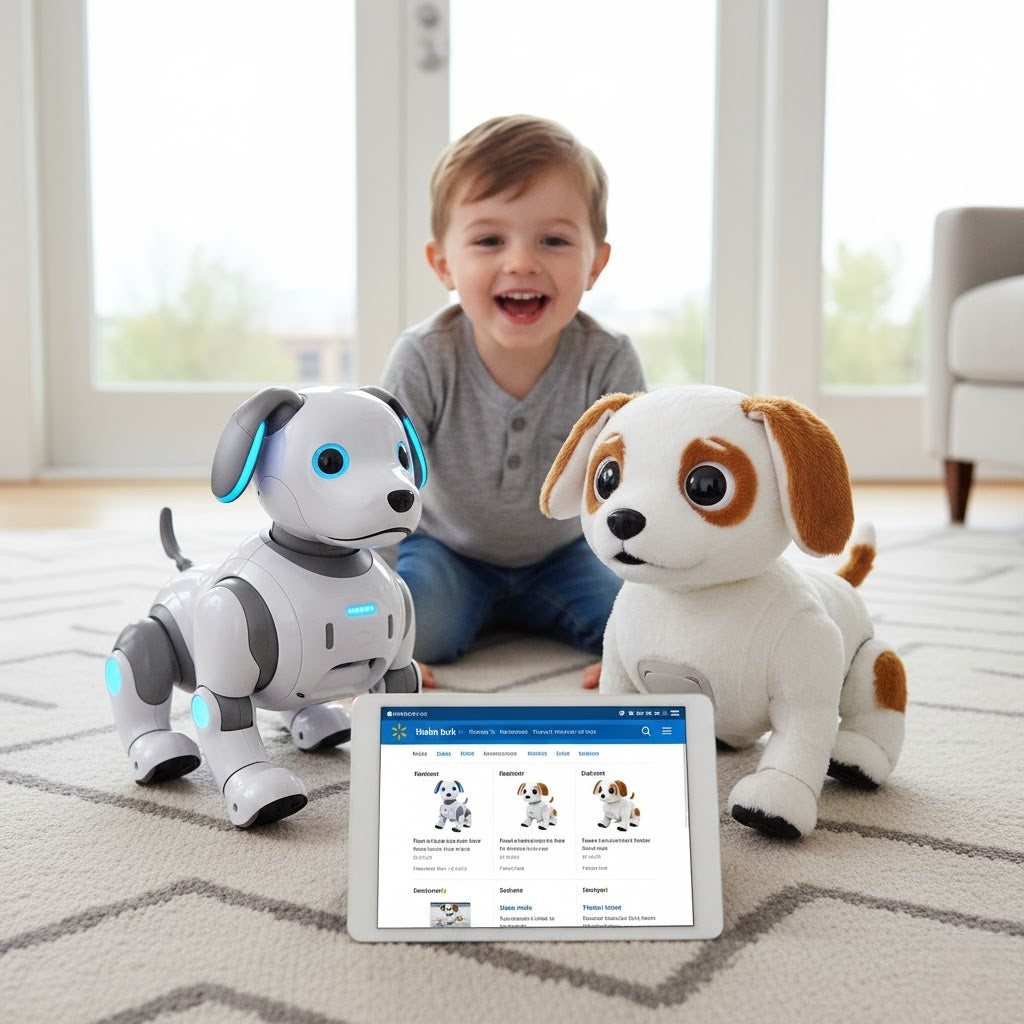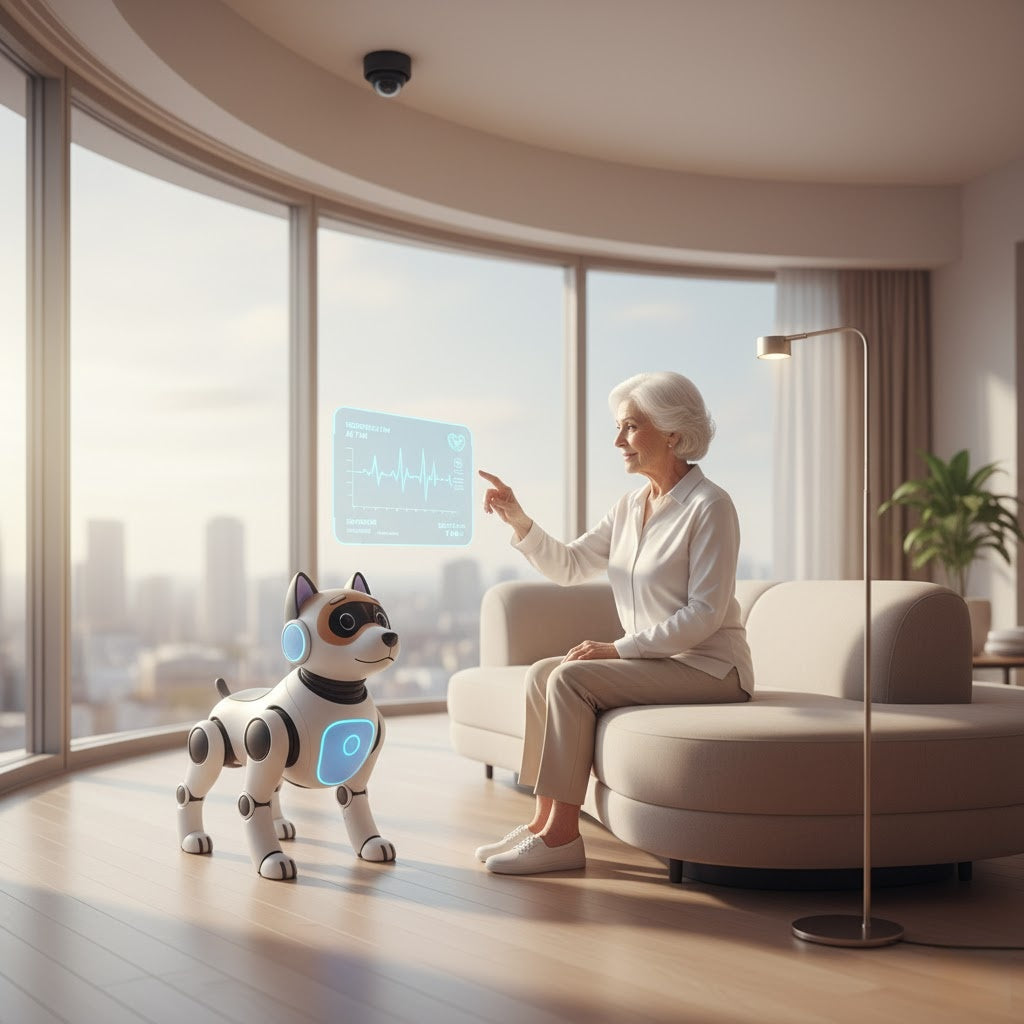
Key Points on Interactive Robotic Animals for Kids
-
These robotic pets can boost a child's emotional growth and STEM skills. Always check the age rating to ensure the toy is both safe and engaging.
-
Advanced models like the Loona robot dog are great for older children. For younger kids, simpler toys like Bitzee are a better fit, with prices from $20 to $500.
-
STEM kits from LEGO SPIKE offer strong educational value. Be aware of the debate over screen time in some models, and choose age-appropriate designs to balance learning and fun.
-
Look for seasonal promotions, such as the Loona Halloween deal, for added value. These offers sell out fast, so act quickly for the best family perks.
Top Recommendations by Age
-
For ages 3-5, opt for basic electronic pet toys like Bitzee, which responds to touch without complex setups, priced around $45.
-
For 6-8, interactive robotic animals like Dog-E provide app-based play for about $80.
-
Older kids (9+) benefit from advanced robot pet toys like Loona, emphasizing AI learning at $500.
Quick Purchase Tips
Understanding the Appeal of Robot Animal Toys
-
For a child's emotions, these toys can ease loneliness. They offer real-seeming friendship, which is ideal for homes where real pets aren't allowed.
-
For learning, some are STEM-based kits that kids build and code themselves. This active experience builds crucial tech skills taught in schools today.
Recommendations Based on Age: Tailored Picks for Every Stage

Ages 3-5: Focus on Simple Interaction and Safety
|
Product
|
Key Feature
|
Price
|
Battery Life
|
Age Fit Rating (Out of 5)
|
|
Bitzee
|
Touch-responsive virtual pets
|
$45
|
1-2 weeks
|
4.5
|
|
Contixo Smart Puppy
|
Voice-activated movements
|
$35
|
2-3 hours
|
4.8
|
Bitzee Interactive Digital Pet
-
Features: This compact device houses 30 virtual characters, including animals like dogs and cats, that react to swipes, tilts, and taps. It includes mini-games for feeding and playing, with evolving pets that "grow" based on care. No app required, making it screen-light for young eyes. Battery-powered with auto-shutoff for safety.
-
Pricing: Approximately $45 on major retailers like Amazon. Often bundled with accessories for $50-60.
-
Pros: Portable and mess-free; promotes fine motor skills through touch interactions. Users praise its Disney-themed variants for added appeal.
-
Cons: Limited to digital screen, which some parents find less tactile; batteries drain quickly with heavy use (replace every 2-3 weeks).
-
Why Recommend: Ideal for preschoolers, as it mimics pet care without real-world mess, fostering responsibility gently. Reviews highlight its role in calming routines, with 4.5/5 stars across platforms.
Contixo Smart Puppy
-
Features: A plush robot dog toy with voice control, walking capabilities, and responsive barks. Includes touch sensors on the head and back for petting reactions, plus simple commands like "sit" or "dance." Rechargeable via USB, lasting 2-3 hours per charge. Soft fur exterior for cuddling.
-
Pricing: Around $30-40, frequently on sale under $30.
-
Pros: Affordable entry into interactive robotic animals; durable against drops. Parents note it helps with separation anxiety.
-
Cons: Limited vocabulary (about 10 commands); no app integration for customization.
-
Why Recommend: Perfect for toddlers exploring cause-and-effect, with its gentle movements avoiding overstimulation. Embed an image here of the puppy in action to visualize its size (about 10 inches tall).
Ages 6-8: Building Engagement with Educational Twists
|
Product
|
Educational Focus
|
Price
|
Play Time per Charge
|
User Rating
|
|
Dog-E
|
AI personalization
|
$80
|
4 hours
|
4.6
|
|
Thames & Kosmos Kit
|
Mechanical building
|
$40
|
N/A (batteries)
|
4.7
|
Dog-E Interactive AI Robot Dog
-
Features: This robot dog toy uses an app for over 1 million personality combinations, with LED lights for expressions and voice modulation. It responds to claps, follows laser pointers, and learns tricks via training mode. Includes feeding simulations and health tracking. Rechargeable battery lasts 4 hours.
-
Pricing: $79.99, often discounted to $70 during sales.
-
Pros: High customization; app teaches responsibility through virtual care. Reviews emphasize its durability for active play.
-
Cons: App requires a compatible device; some kids find setup challenging without adult help.
-
Why Recommend: Bridges fun and learning, aligning with school-age curiosity. Picture a child programming a "fetch" routine—it's empowering!
Thames & Kosmos Kids First Robot Pet Shop
-
Features: This STEM robot kit lets your child create 8 different motorized creatures, such as an owl or a cat. Storybook-style handbook walks them through the building process. The kit includes gears and motors that let the figures move around and flap their wings. No coding needed, but introduces mechanics. Battery-operated (requires AA batteries).
-
Pricing: $39.95 on Amazon.
-
Pros: Hands-on building boosts problem-solving; reusable parts for creativity. High educational value.
-
Cons: Assembly time (30-60 minutes per model); parts can be lost easily.
-
Why Recommend: Encourages tinkering, making it a gateway to engineering. Suggest including a video tutorial embed for assembly tips.
Ages 9+: Advanced Interaction and STEM Depth
|
Product
|
AI/STEM Level
|
Price
|
Customization
|
Durability Rating
|
|
Loona
|
High AI
|
$500
|
Voice/Gesture
|
4.8
|
|
Petoi Bittle X
|
High Coding
|
$299
|
Open-Source
|
4.5
|
|
LEGO SPIKE
|
Medium Coding
|
$300
|
Modular Builds
|
4.7
|
Loona Robot Dog
-
Features: Powered by ChatGPT-4o, this robot dog toy recognizes faces, gestures, and voices with 95% accuracy, enabling conversations, games like fetch, and even digital art creation. Equipped with a 720P camera, 3D ToF sensor for navigation, and auto-recharge. Battery lasts 2-4 hours of continuous play, up to 30 hours standby.
-
Pricing: $499.90 (sale from $527.99). Accessories like costumes add $20-100.
-
Pros: Highly responsive, premium build; users love its emotional expressions. Educational via Blockly programming.
-
Cons: Higher cost; requires Wi-Fi for full features.
-
Why Recommend: Stands out for realism, inspired by AI advancements like self-learning gaits.
Petoi Bittle X
-
Features: A quadraped STEM robot animal kit for building a palm-sized robot dog with open-source code. Includes servos for realistic gaits, app control for walking and tricks, and Python/Arduino compatibility. Assembly time: 2 hours.
-
Pricing: $299.
-
Pros: Deep coding potential; expandable with sensors.
-
Cons: Assembly required; not plush like traditional pets.
-
Why Recommend: For aspiring engineers, tying into biomimicry trends.
-
Features: 449-piece kit for building programmable robots, including animal models with motors and sensors. Drag-and-drop coding via app, with narrative lessons on STEAM. Bluetooth-enabled for group play.
-
Pricing: Around $300 (varies by retailer).
-
Pros: Versatile; supports classroom or home use.
-
Cons: Higher price; needs device for coding.
-
Why Recommend: Promotes collaborative learning.
Purchase Considerations: Making Smart Choices

-
Safety comes first: choose certified non-toxic parts and rounded edges for young kids.
-
Also, consider battery life. A rechargeable battery saves money later, but remember to check its charging time, often around three hours.
-
Educational value shines in STEM robot animal kits, but verify compatibility with your child's interests—some prefer plush feels over hard plastic.
-
Pricing strategies: Watch for bundles or sales; Loona's Halloween promo exemplifies seasonal deals. Durability against rough play is key—user reviews often cite wheel wear in mobile robots. Consider warranties (1-2 years standard) and return policies.
-
Environmental impact: Opt for recyclable packaging and long-lasting toys to minimize waste. Finally, read diverse reviews; X posts on Loona highlight its charm but note occasional software glitches.
|
Age Group
|
Product Example
|
Price Range
|
Key Feature
|
Educational Value
|
Parent Review Score
|
|
3-5
|
Bitzee
|
$40-50
|
Touch Reactions
|
Low-Medium
|
4.5
|
|
6-8
|
Dog-E
|
$70-80
|
App Tricks
|
Medium
|
4.6
|
|
9+
|
Loona
|
$400-500
|
AI Conversations
|
High
|
4.8
|
FAQ
What age is best for starting with robot pet toys?
-
For ages three to five, simple touch-response toys are ideal, teach simple cause and effect
-
For ages five to eight, more interactive robots like Miko or Loona are suitable, offering games and simple coding for early STEM skills.
-
From eight years and up, advanced options like Vector are ideal, introducing real programming and problem-solving for a deeper experience.
Can robot pets teach real STEM skills?
What's the Loona Halloween promo?
Do robot toys require internet?
-
Standard robot toys operate independently. They use a handheld remote or have their own pre-set routines.
-
Bluetooth-enabled toys pair with a mobile device.
-
Internet is only necessary for downloading new features or game content through the app. "Smart" companion robots need a steady Wi-Fi link. Their advanced skills, like answering questions and learning, rely on an online connection to work.







